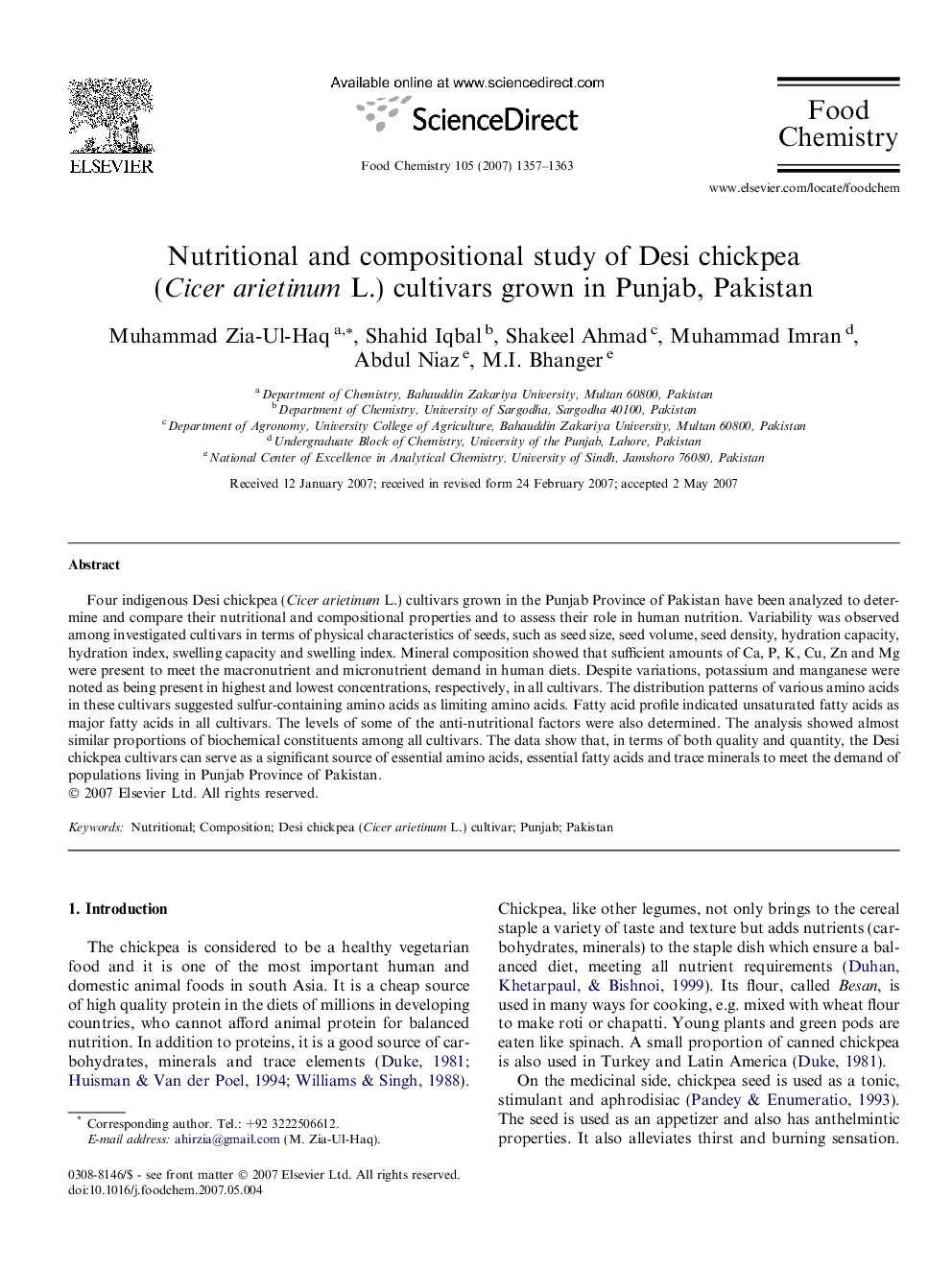| Article ID | Journal | Published Year | Pages | File Type |
|---|---|---|---|---|
| 1189301 | Food Chemistry | 2007 | 7 Pages |
Four indigenous Desi chickpea (Cicer arietinum L.) cultivars grown in the Punjab Province of Pakistan have been analyzed to determine and compare their nutritional and compositional properties and to assess their role in human nutrition. Variability was observed among investigated cultivars in terms of physical characteristics of seeds, such as seed size, seed volume, seed density, hydration capacity, hydration index, swelling capacity and swelling index. Mineral composition showed that sufficient amounts of Ca, P, K, Cu, Zn and Mg were present to meet the macronutrient and micronutrient demand in human diets. Despite variations, potassium and manganese were noted as being present in highest and lowest concentrations, respectively, in all cultivars. The distribution patterns of various amino acids in these cultivars suggested sulfur-containing amino acids as limiting amino acids. Fatty acid profile indicated unsaturated fatty acids as major fatty acids in all cultivars. The levels of some of the anti-nutritional factors were also determined. The analysis showed almost similar proportions of biochemical constituents among all cultivars. The data show that, in terms of both quality and quantity, the Desi chickpea cultivars can serve as a significant source of essential amino acids, essential fatty acids and trace minerals to meet the demand of populations living in Punjab Province of Pakistan.
